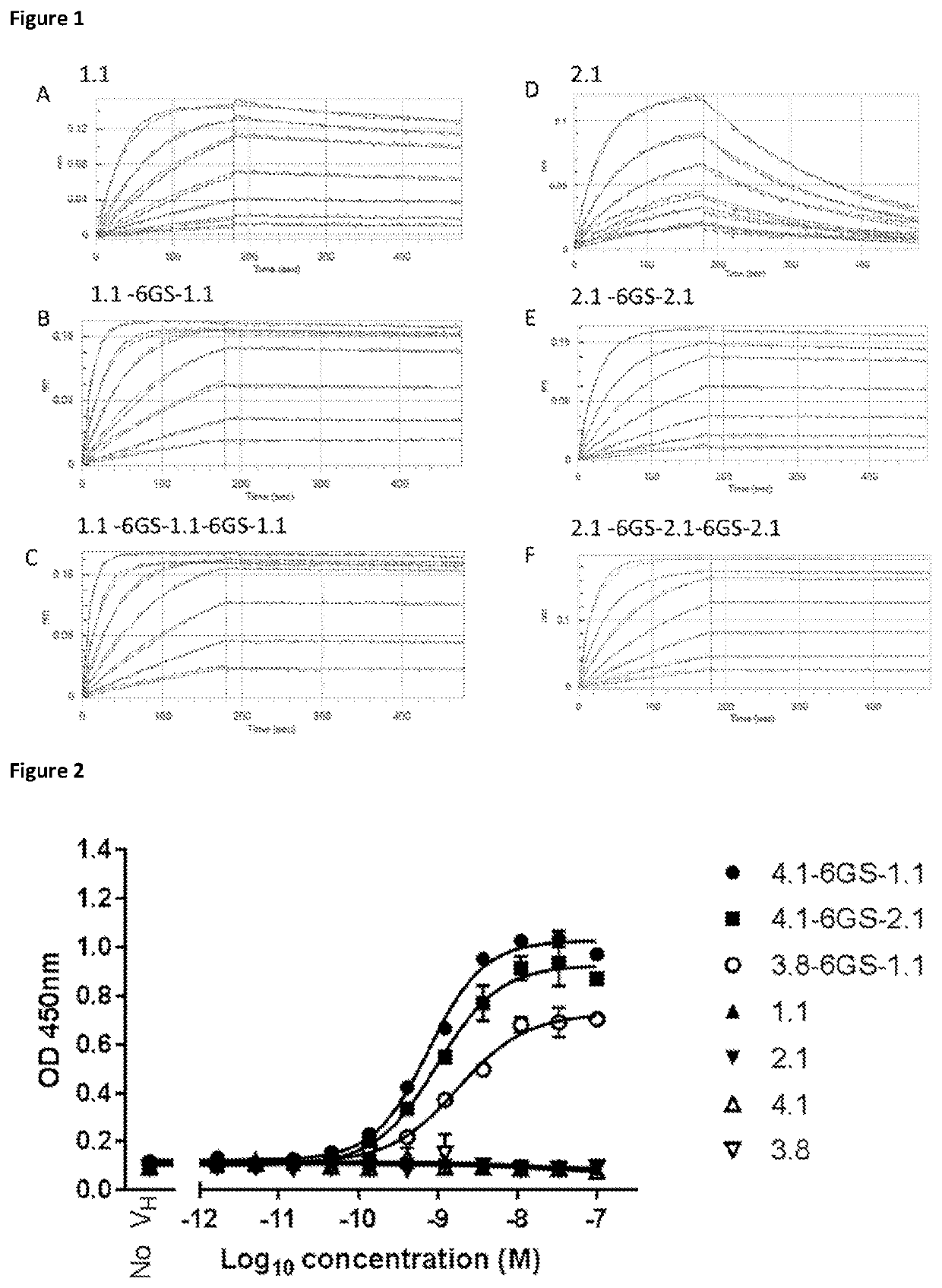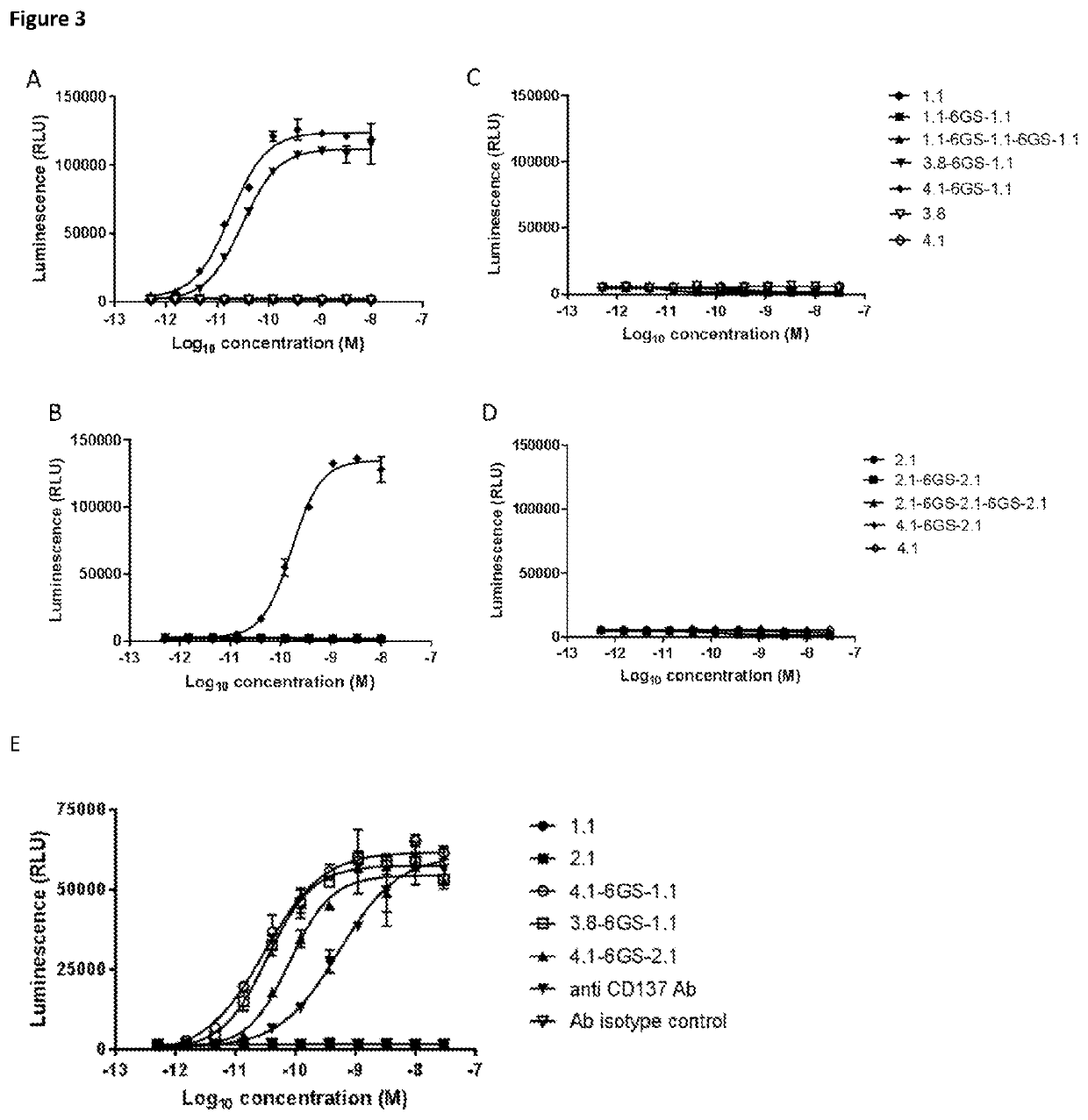Single domain antibodies that bind to cd137
a single-domain antibody and cd137 technology, applied in the field of single-domain antibodies that bind to cd137, can solve the problems of systemic cd137 effects leading to unwanted side effects, murine models with severe toxicity, and tumor cell lysis
- Summary
- Abstract
- Description
- Claims
- Application Information
AI Technical Summary
Benefits of technology
Problems solved by technology
Method used
Image
Examples
example 1
ion of Tg / TKO Mice
[0274]Mice carrying a human heavy-chain antibody transgenic locus in germline configuration within a background that is silenced for endogenous heavy and light chain antibody expression (triple knock-out, or TKO) were created as previously described (WO2004 / 076618, WO2003 / 000737, Ren et al., Genomics, 84, 686, 2004; Zou et al., J. Immunol., 170, 1354, 2003 and WO2016 / 062990). In summary, transgenic mice were derived following pronuclear microinjection of freshly fertilised oocytes with a yeast artificial chromosome (YAC) comprising a plethora of human VH, D and J genes in combination with mouse immunoglobulin constant region genes lacking CH1 domains, mouse enhancer and regulatory regions. The YAC used comprised multiple human heavy chain V genes, multiple human heavy chain D and J genes, a murine CH1 gene and a murine 3′ enhancer gene. It lacks the CH1 exon.
[0275]The transgenic founder mice were back crossed with animals that lacked endogenous immunoglobulin expre...
example 2
ion Protocol
[0276]Tg / TKO mice aged 8-12 weeks were immunised with human CD137-human Fc chimeric protein (Acro Biosystems cat no. 41B-H5258), human CD137-His tagged protein (R&D Systems, custom product), CHO cells over-expressing human CD137 (cell line produced in-house using standard methods) or a combination of recombinant protein and CHO human CD137 expressing cells.
example 3
SA
[0277]Serum was collected from mice before and after immunisation and checked by ELISA for the presence of serum human CD137 reactive heavy chain antibodies in response to immunisation with CD137 antigen.
[0278]Whole blood samples were centrifuged at 13000 rpm for 5 mins to separate blood from serum. Serial dilutions of serum were prepared in 3% Marvel® / PBS in polypropylene tubes or plates, pre-incubated for at least one hour at room temperature then transferred to the blocked ELISA plate and incubated for at least one hour. Unbound protein was removed by repetitive washing with PBS / Tween®-20 followed by PBS. A 1:10,000 solution of biotin-conjugated, goat anti-mouse IgG, Fcgamma subclass 1 specific antibody (Jackson ImmunoResearch cat. no. 115-065-205), prepared in PBS / 3% Marvel® was added to each well and incubated at room temperature for at least one hour. Unbound detection antibody was removed by repeated washing using PBS / Tween® 20 and PBS. Neutravidin-HRP solution (Pierce cat....
PUM
| Property | Measurement | Unit |
|---|---|---|
| nucleic acid | aaaaa | aaaaa |
Abstract
Description
Claims
Application Information
 Login to View More
Login to View More - R&D
- Intellectual Property
- Life Sciences
- Materials
- Tech Scout
- Unparalleled Data Quality
- Higher Quality Content
- 60% Fewer Hallucinations
Browse by: Latest US Patents, China's latest patents, Technical Efficacy Thesaurus, Application Domain, Technology Topic, Popular Technical Reports.
© 2025 PatSnap. All rights reserved.Legal|Privacy policy|Modern Slavery Act Transparency Statement|Sitemap|About US| Contact US: help@patsnap.com



